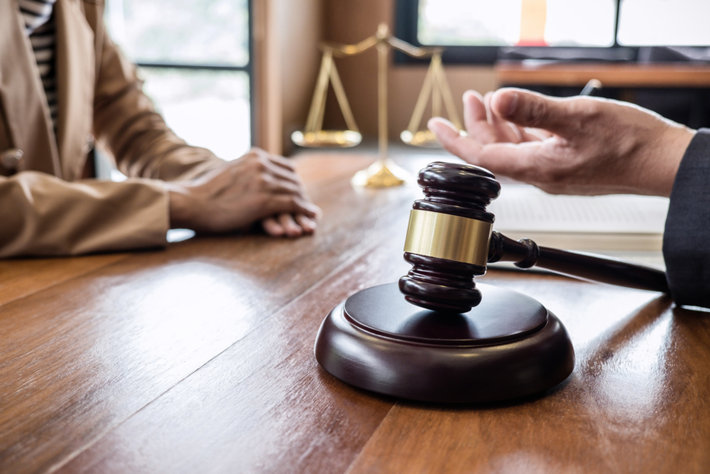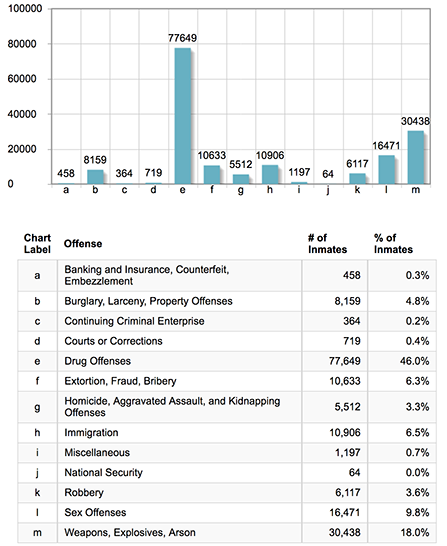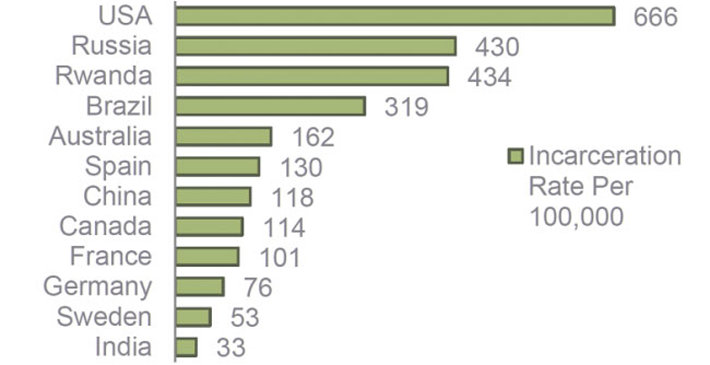Criminal Prosecution For Drug Crimes Should Result in Drug Rehabilitation—Not Jail

There was a recent article in the Washington Post which caught my eye. The report was about county prosecutor candidates competing for votes in Virginia. The article discussed the layered nuances of criminality and drug use.
The article also covered different candidates’ points of view on the matter. Some of the candidates or incumbent prosecutors leaned towards a “tough on crime” approach to drug users. Other candidates or incumbent prosecutors preferred a more evidence-based, treatment-based route.
The article is part of an ongoing debate. What do we do with struggling addicts? What do we do when a person has an addiction to an illegal substance, or when he or she is unlawfully using a legal substance? Current administrative dictums say to incarcerate them. I say that’s wrong. We need to treat such persons for their drug habits, not send them to jail.
A jail cell will do nothing helpful for someone whose only crime was to use drugs. An addiction treatment center, on the other hand, will help that person overcome their substance crisis, effectively giving them a new chance at life. Unfortunately, our nation leans heavily on the side of incarcerating even the lowest level of drug offenders.
A Complicated Issue
“The American criminal justice system is now a mass incarceration machine set on auto-pilot. As a public defender, I know all too well how this machine dismantles communities, destroys families, uses bad science, and wastes money.”

Parisa Tafti, a defense lawyer who is running for the attorney seat for Arlington County, Virginia, spoke on this issue. She said, “The American criminal justice system is now a mass incarceration machine set on auto-pilot. As a public defender, I know all too well how this machine dismantles communities, destroys families, uses bad science, and wastes money.”
Her sentiments are measured on the faces of many others. For too long we’ve taken a heavy-handed incarceration stance—a concept brought on by 1970s-era “War on Drugs” theories. Now we have to focus on another solution for drug users. The incarceration strategy isn’t working to reduce the drug epidemic.
But this raises a controversial issue. Drug users are committing crimes. If they are breaking the law, shouldn’t they receive punishment just as anyone else would? Maybe. And here we have the controversy which is why the issue on what to do with drug offenders is so complicated. Logic says help them get better through addiction treatment. The law says incarcerate them as we would any other wrongdoer.
Why not have drug offenders go to an addiction treatment center first and get cleaned up and rehabilitated off of drugs permanently? Then we could have them do public service or some other valuable deed as a means for making amends in prison.
Statistics on Drug Users and Incarceration

Let’s explore the logic side of this. With just a casual examination of the statistics on drug-related incarceration, we can soon understand why this approach does not work.
- According to the Federal Bureau of Prisons, 46% of federal prisoners are serving jail time for drug offenses. That number comes out to about 77,649 prisoners. And this is just the federal prisons, not state prisons or county jails.
- A state’s drug problem does not recede when we increase incarceration. According to Pew Charitable Trusts, about 300,000 people are currently held in state and federal prisons for drug-related crime. Nearly forty years ago, in 1980, that number was 25,000. Has the drug problem gotten less severe? No, it’s gotten considerably worse. And the Pew research goes on to present firm evidence that stricter incarceration, longer prison sentences, and more incarceration do not reduce drug use and drug crime statistics.
- According to the Drug Policy Alliance, the United States has the highest incarceration rate of any nation. About 5% of the world’s population lives in the U.S., yet our country is also home to almost 25% of the world’s population of inmates. For example, 2016 saw 1.5 million drug arrests in the U.S., with 80% of them being for possession crimes.

- When a drug user is sent to jail, this leaves a terrible stain on his permanent record. Going to a treatment center, on the other hand, is a medical affair, hence strictly confidential and to the person’s betterment. The alternative (time spent in jail) is public information and leads to difficulties with things like child custody, employment opportunity, voting rights, business loans, student aid, licensing, and so on.
- A research paper published at the U.S. National Library of Health shows us that incarcerating drug users does not work because of recidivism rates alone. According to the article, “A review of recidivism in 15 states found that one-quarter of individuals released returned to prison within three years for technical violations that included, among other things, testing positive for drug use.”
When a person’s only crime is possessing drugs because they have a drug habit, does it makes sense to lock them away for years at a time among hardened criminals where they won’t get any help for their addiction? Clearly not.
Addiction Treatment, Not Jail Time, Is the Answer
Addiction treatment is the right answer when someone is arrested for drug possession. This means we need to shift how our local counties, state justice departments, and federal justice systems prosecute drug users.
A great example of a locale that’s already doing this is the Law Enforcement Assisted Diversion (LEAD) program in Seattle, Washington. The goal of LEAD is to utilize the help of law enforcement officers to direct low-level drug criminals into addiction treatment centers, not jail cells.
Drug users don’t do well in jail cells. Programs like LEAD send possession drug offenders to addiction treatment centers instead. LEAD is a sensible approach to addressing this situation. And most of all, it works.
According to summaries, “The Recidivism Report tests the relative effectiveness of the LEAD program compared to the ’system‐as‐usual’ control condition in reducing criminal recidivism (i.e., arrests and charges). People in LEAD were 60% less likely than people in the control group to be arrested within the first six months of the evaluation. Over the entire course of the evaluation to date, people in LEAD were 58% less likely than people in the control group to be arrested.”
Why Drug Users Should Be Encouraged to Get Well through Addiction Rehab

To touch slightly on the politics of this issue—we have some work ahead of us. The current Administration seeks to incarcerate drug users heavily, pushing for maximum mandatory minimum sentencing terms for even minor drug possession charges.
Brett Tolman, former U.S. Attorney for Utah, speaks on why that won’t work: “The Justice Department’s expected shift to prosecuting and incarcerating more offenders, including low-level and drug offenders, is an ineffective way to protect public safety. Decades of experience shows we cannot arrest and incarcerate our way out of America’s drug problem. Instead, we must direct resources to treatment and to specifically combatting violent crime. This will help law enforcement do our jobs better.”
“No jail cell is going to help an addict out of that mess.
An addiction treatment center will.”
Drug users need encouragement to get help for their habits through addiction treatment centers. Addiction treatment is what will help drug users get better.
Addiction is a complicated nightmare. It is a hellish conglomeration of past difficulties brought to the forefront. It’s a mashup of behavioral issues and stumbling blocks, chemical dependence to the drug, psychological reliance on what the drug “does for the person,” and so on.
All of this and more comprise an addiction. No jail cell is going to help an addict out of that mess. An addiction treatment center will. Should drug criminals still have to serve some public service or provide amends for wrongs done? Sure. But not until they’ve gotten the help of a treatment center and are clean and sober.
Sources:
Reviewed and Edited by Claire Pinelli ICAADC, CCS, LADC, RAS MCAP


 ®
®